
Soil Solarization For Weed, Pest, And Disease Control
Soil solarization is an effective method for killing bacteria and reducing the prevalence of diseases, pests, and weeds. This technique is environmentally benign since it uses solar and water power instead of harmful chemicals. And because it enhances ground health, soil solarization’s aftereffects are even more far-reaching. This is why the soil solarization method is spreading globally.
While there are benefits to this approach, it does require some work and understanding to get the field ready for the treatment and to maintain control over it. With remote sensing and AI-driven analytics, soil solarization technology is much easier to use and adopt.
What Is Soil Solarization?
Soil solarization is an environmentally friendly and non-chemical way to get rid of pests, weeds, and diseases. Soil solarization is adopted in various agricultural production systems. It involves covering weed-free ground with a transparent, airtight material (usually plastic) so that solar energy can heat up the field. Under the plastic, the ground’s top 5 cm (2 inches) can get as hot as 42 to 60°C (108 to 104°F), but soil solarization temperatures vary significantly from location to location. The heat is used for the soil solarization method’s primary aim, which is to eradicate weeds and pests. It also helps accelerate the start of growing watermelon and other warm-loving plants.
How To Use Soil Solarization For Disease Control and Pest Management
Despite its widespread application, solarization’s effectiveness against various pests and diseases is variable. The time needed for treatment varies between species. While high soil temperatures, between 30 and 33°C (86-91°F), are lethal to most insects and other pests, some of them will not perish from sun exposure for another four to six weeks at the earliest.
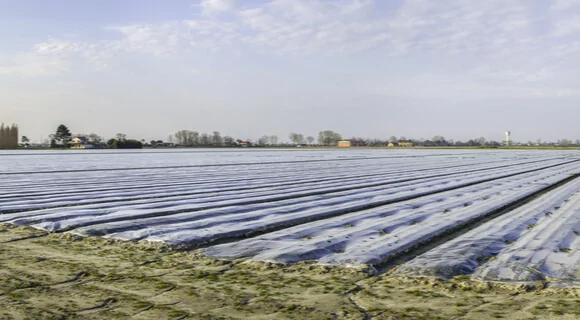
Does Soil Solarization Kill Fungi And Bacteria?
While soil solarization is effective against many plant-infecting fungi and bacteria, it is not effective against all of them.
The use of soil solarization for disease control can be explained by the fact that it kills off pathogens, including Verticillium dahliae, Phytophthora cinnamomi, Clavibacter michiganensis, Streptomyces scabies, Rhizoctonia, Fusarium, Sclerotinia, and Agrobacterium tumefaciens. Nonetheless, Macrophomina, Pythium, and Pseudomonas solanacearum, the causal agents of stem and root rots, are resistant to the method.
Does Soil Solarization Kill Weeds?
Soil solarization weed control can effectively combat many annual weeds. You can prevent them from emerging by heating the land to 37°C (99°F) for 2–4 weeks. It works best on the surface layer, as the temperature rises more slowly deeper in the ground. Ageratum, Amaranthus, Digitaria, Portulaca, Setaria, and other annuals are all primary targets of this method’s anti-growth efforts. Invasive weeds spread by stolons are more difficult to manage than those that reproduce by producing many tiny seeds.
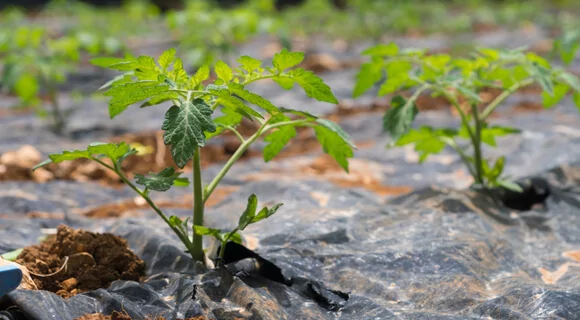
At the same time, soil solarization has shown its efficacy in removing tough perennial weeds, including kudzu, bermudagrass, nutgrass, and bindweed, from eco-sensitive areas. It’s important to remember that many weeds can survive extreme heat by re-sprouting from their extensive root systems. The ground must get hot enough throughout the soil solarization to kill specific weeds. Given that summer plants tend to be more heat-tolerant, this strategy will be more effective against winter weeds.
Since the seeds and roots of perennials grow quite a ways into the ground, solarizing the soil to kill weeds is more time-consuming and laborious than dealing with annuals. Multiple treatment campaigns may be necessary to eradicate them from the area permanently. It may take a few more months before you’re ready to plant, but you won’t have to use harmful chemicals to get rid of those weeds.
To maximize the effectiveness of soil solarization for weed management in the field, it is best to water the area for at least two to three weeks before the treatment, allow the weeds to grow, and then incorporate them into the ground. If weeds sprout under the plastic, it indicates something went wrong in the procedure.
Soil solarization is in line with the tenets of permaculture, regenerative agriculture, and organic farming since it emphasizes using time-tested techniques over adopting new — intensive farming ones. It explains the benefit of the soil solarization technique for weed management in permaculture and other chemical-free practices. Still, not all permaculturists agree. Some of them think that artificial plastic does not fit into natural landscapes. In addition, permaculture focuses on perennials, while solarization is more beneficial for growing annuals.
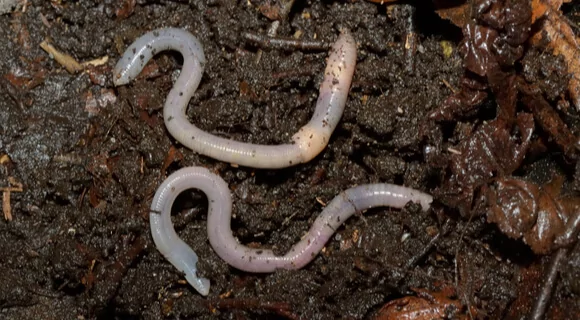
Does Soil Solarization Kill Earthworms?
Earthworms can’t stand it when it gets too hot, so they only live in cold, wet environments. The effects of solarization on them are barely explored. Still, many think they burrow underground to avoid the heat.
Does Soil Solarization Kill Nematodes?
Many nematode species (cyst, pin, spiral, sting, root-knot, and others) are eliminated with soil solarization. Root-knot nematodes are a particular problem when tomato plants are transplanted into soil, but research shows that soil solarizing can help. Plants with shallow roots and a quick growth rate benefit the most from soil solarization for nematode control.
EOSDA Crop Monitoring
Manage your fields with high-resolution satellite images for the most accurate and timely changes detection!
A temperature of 52°C (125°F) for 30 minutes or 55°C (130°F) for 5 minutes is sufficient to kill root-knot nematodes and their eggs . Yet, nematodes are worms, so they may move around quite a bit. Unlike their eggs, they can flee dangerous temperatures and return at more suitable times. Also, deeper into the ground, the temperature falls, less impacting nematodes that dwell in the subsoil.
That’s why soil solarization alone may not be enough to eradicate the nematodes. In this instance, you can improve pest management through the use of both solarization and chicken manure .
Does Soil Solarization Kill Beneficial Bacteria And Other Microorganisms?
Solarization kills many bacteria and may threaten beneficial biota, too. This is why it is vital to restore the balance by adding organic matter after completion.
The good news is that beneficial microorganisms can either resist the soil solarization procedure or quickly re-establish their populations after the crucial impact. In particular, this refers to:
- microorganisms parasitizing bacteria and fungi that are pathogens to plants;
- symbiotic mycorrhizal fungi that colonize plant roots and trade moisture and nutrients (particularly phosphorus) for photosynthetic products.
The method may also destroy nitrogen-fixing Rhizobium. In this case, nitrogen fixation can be encouraged by planting N-fixing leguminous crops to be inhabited by the symbiotic Rhizobium.

How To Do Soil Solarization: Process And Key Steps For Implementing
If farmers want to get all the benefits of soil solarization, they need to plan the process well and keep up with all the rules, from preparing the field to treating the plastic afterward. It is essential to keep in mind all the factors that could impact the soil solarization process. The required knowledge will empower agronomists to avoid what hinders and enhance what helps. The specific factors to consider are the following:
- soil type and color;
- presence of weeds and their removal;
- possible shade-casting objects (e.g., agroforestry);
- season of the year;
- treatment duration and timelines;
- soil moisture content and irrigation plan if natural ground moisture is not enough;
- type and color of plastic;
- bed orientation (north to south for raised beds is preferable);
- further use and recycling of plastic, etc.
Preliminary Soil Testing
Soil testing matters because solarization is not equally efficient for all types. It works best in soils with high water retention (such as clay or loam). Clay and loam retain moisture longer, which means they can produce steam for longer, too. Sandy grounds are less effective in this regard, but they are sometimes suitable. If you deal with sandy soil, it is possible to improve the situation through precision irrigation.
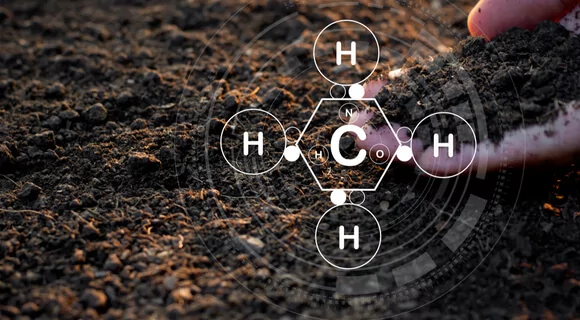
Preparatory Agricultural Activities
When preparing the soil for solarization, the primary objective is to establish a smooth ground cover that will allow the plastic sheeting to be stretched as close to the ground as feasible. The field preparation includes:
- cleaning from weeds and debris so as not to spoil the plastic, and because vegetation cover hinders heat penetration;
- making central elevations for covered strips for rainwater to run off the plastic and not cool it down;
- arranging beds (flat or raised);
- tilling the soil before soil solarization to break up large earth chunks that could damage or raise the cover;
- facultative soil aeration to decrease compaction since bulk earth density adversely affects water-holding capacity;
- placing drip irrigation lines if necessary;
- assessing moisture content and moisturizing the beds when needed.
Plastic: Which Kind To Choose And How To Apply It
When getting ready to soil solarization, it is essential to select the appropriate plastic, taking into account its type, color, and thickness. The term “plastic” typically refers to plastic polymers, including:
- polyethylene (PE),
- polyvinyl chloride (PVC),
- ethylene-vinyl acetate (EVA).
PVC and EVA have better optical properties but are more expensive. For this reason, PE is the most common option. Now, let’s examine in greater detail the features of plastic that make it suitable for solarization.
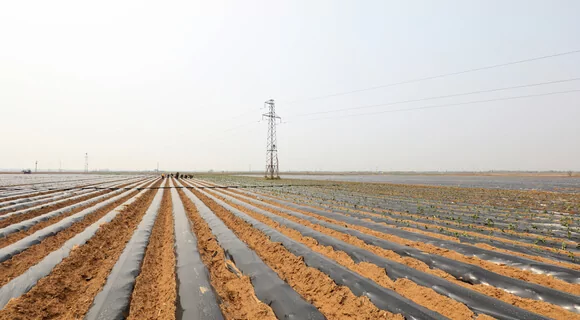
Color Of Plastic
The primary debate is about black plastic vs. clear for soil solarization. There is no unambiguous answer to the question of which colored polythene is best used for soil solarization. Colorless (clear) plastic is the best for the sun’s rays to penetrate and supply heat to the ground (compared to black or white plastic). However, in cooler regions, soil solarization with black plastic is justified since, even though black film absorbs heat, it also controls weeds that may develop under transparent plastic when the heat is insufficient. Also, black plastic proved beneficial for growing watermelon and warm-loving crops.
Thickness Of Plastic
The thinnest polyethylene (1 mil) is the best for maximum heating, but it is also damaged easily. In windy areas, soil solarization plastic of 1.5-2 mils is typically used. Smaller territories are sometimes covered with thicker plastic (4 mils).
How To Lay The Plastic
There are two options for placing the plastic: it may either cover the field entirely or be laid out in strips as wide as the sheet size allows. Although strip coverage is more cost-effective, pests and weeds may re-infest the covered areas by penetrating from the uncovered ones.
It is important for successful soil solarization to thoroughly bury the edges of the plastic film; otherwise, heat will escape outside. For this reason, the sheet should be wider than the strip. If the soil solarization film is damaged, it can be patched with clear tape.
It is crucial to fit the plastic as tightly to the ground as possible, as air space reduces heating and will cause plastic “waves” on windy days, dissipating heat.
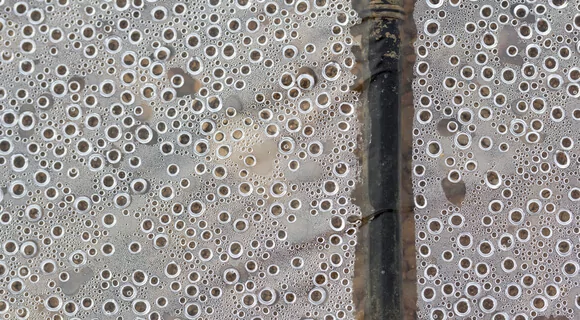
How And Why To Irrigate
One misconception is that soil solarization relies solely on absorbing sunlight and transferring that heat to the ground. Solar energy and water are combined to create steam (vapor), and it is this vapor that is responsible for the method’s lethal effects on pests and weeds. For this reason, soil solarization without moisture doesn’t realize its full potential; only plastic-covered ground is more sterile than bare ones.
How often to water soil during solarization? There is no proper answer, but the following straightforward advice will do. Droplets will appear on the plastic as the steam cools, indicating that there is enough water for the treatment to be successful. If you don’t see any droplets, it’s time to water the ground.
Because water acts as a conductor of heat, microorganisms are killed more quickly in moist ground. Depending on the moisture level, irrigation can be done either before or after the plastic is laid down. Drip irrigation installed in a covered area is an excellent alternative to pipes or furrows for water delivery.
Either insufficient or excessive moisture greatly diminishes the efficiency of the treatment. What is the soil moisture requirement for soil solarization, then? The procedure works best when the soil under the plastic is saturated to at least 70% of field capacity in the surface layers and moist to depths of 60cm (24 inches).
You can track field ground moisture levels before and during soil solarization with the help of the EOSDA Crop Monitoring feature, showing water content for topsoil depths of 5cm (2 inches) and depths of 68cm (27 inches) in the rhizome area. Farmers can use this information to determine if the land is ready for the procedure and whether or not additional watering is needed throughout this process.
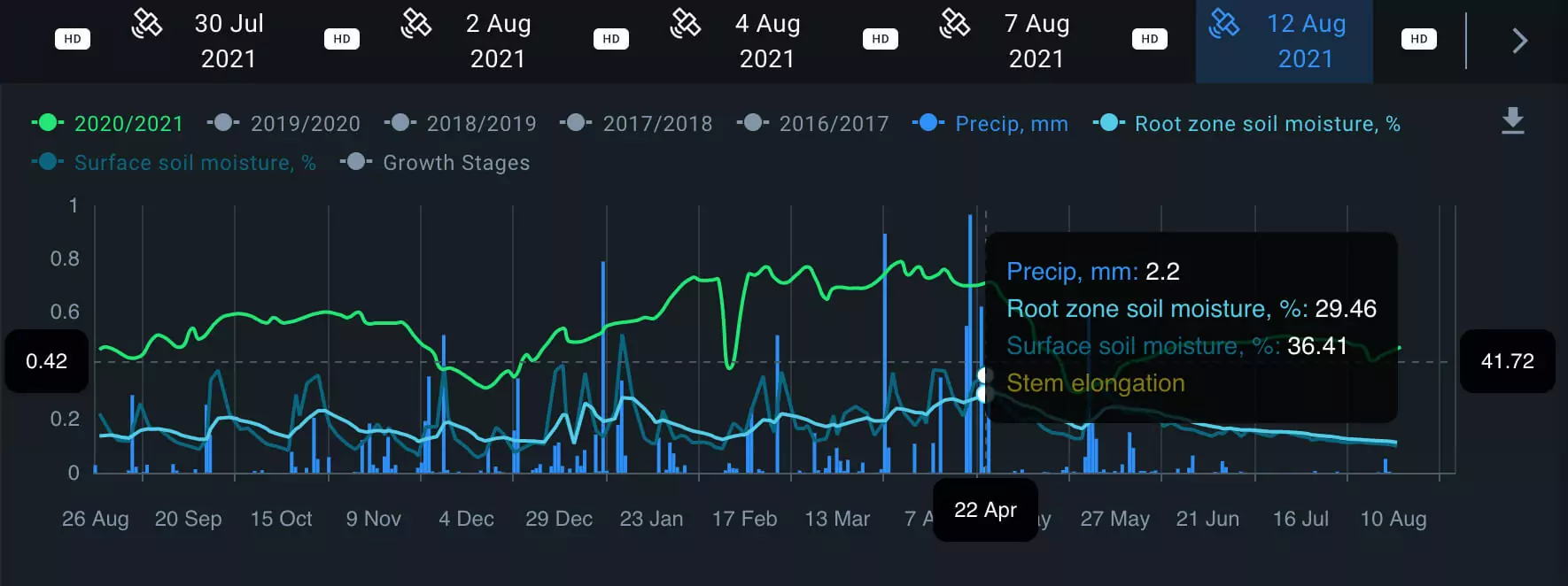
How Long Does Soil Solarization Take?
The process usually takes between four and eight weeks. There should be enough time to conduct soil solarization before planting fall crops. If all the conditions are met, this treatment can save agronomists three to four months of pest control work.
The hottest months of the year (usually June, July, and August) are ideal for soil solarization. If the weather allows, late May or early September will also work.
Removing Plastic
Once the process is complete, the plastic can be removed or painted. Each plastic color will have its own effect:
- black — prevents weeds from sprouting;
- white — cools down the ground;
- silver — deter flying pests.
Yet, if you are not taking the film off, the material quickly wears out, gets dirty, and can’t be used again for the next season. Unpainted, the plastic can be reused for crop transplantation.
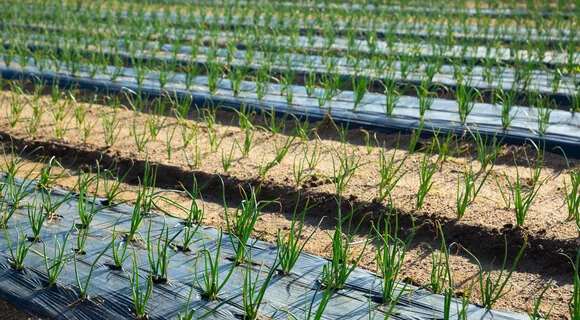
Improving Soil Solarization Efficacy With Other Control Methods
Even though the current adoption of solarization worldwide is still relatively uncommon, it is expected to gain more popularity as a chemical-free measure because of the methyl bromide bans due to ozone depletion. Many microorganisms in the ground are killed by solarization because they are either too heat-sensitive to survive or cannot penetrate the ground to escape the heat.
While soil solarization can be successful against pests and weeds on its own, in cooler places or when the temperatures reached are not lethal but sublethal, it is best used in conjunction with other control measures, such as Integrated Weed Management and Integrated Pest Management.
EOSDA Crop Monitoring’s Assistance In Further Weed and Pest Control
After the films are removed and soil solarization is complete, there is an additional risk of weed development and pest or pathogen infestation. Thanks to its built-in MSAVI index, which can accurately detect vegetation levels even when there is much bare soil in the field, EOSDA Crop Monitoring can help limit this risk by monitoring crops from the very beginning of their development.
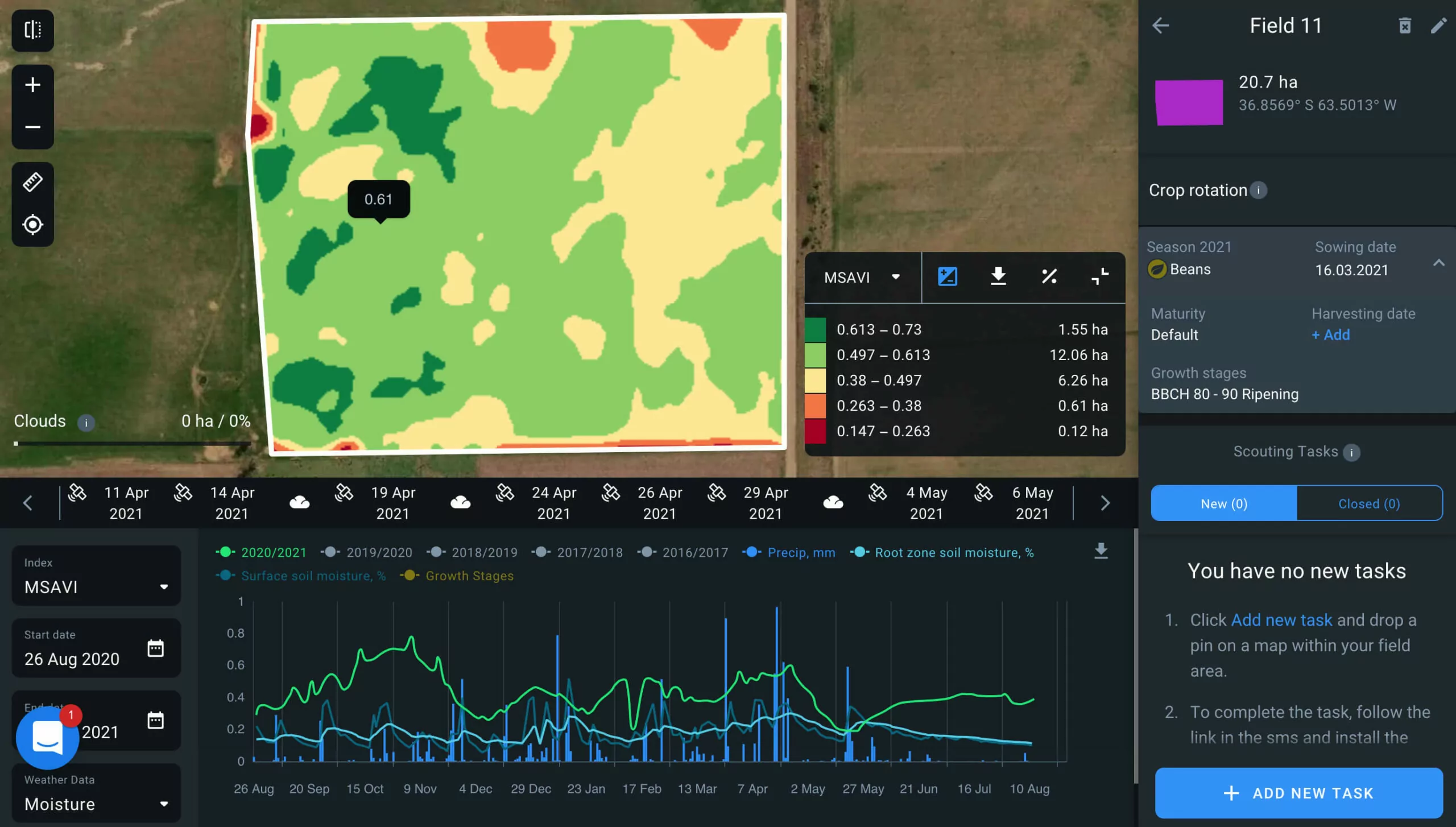
With variable-rate technology (VRT), timely identification of problem zones allows for early fertilizer application, specifically in troubled areas rather than the entire field. After detecting and scouting the hot spots, farmers decide what to apply, be it fungicides, fumigants, or herbicides.
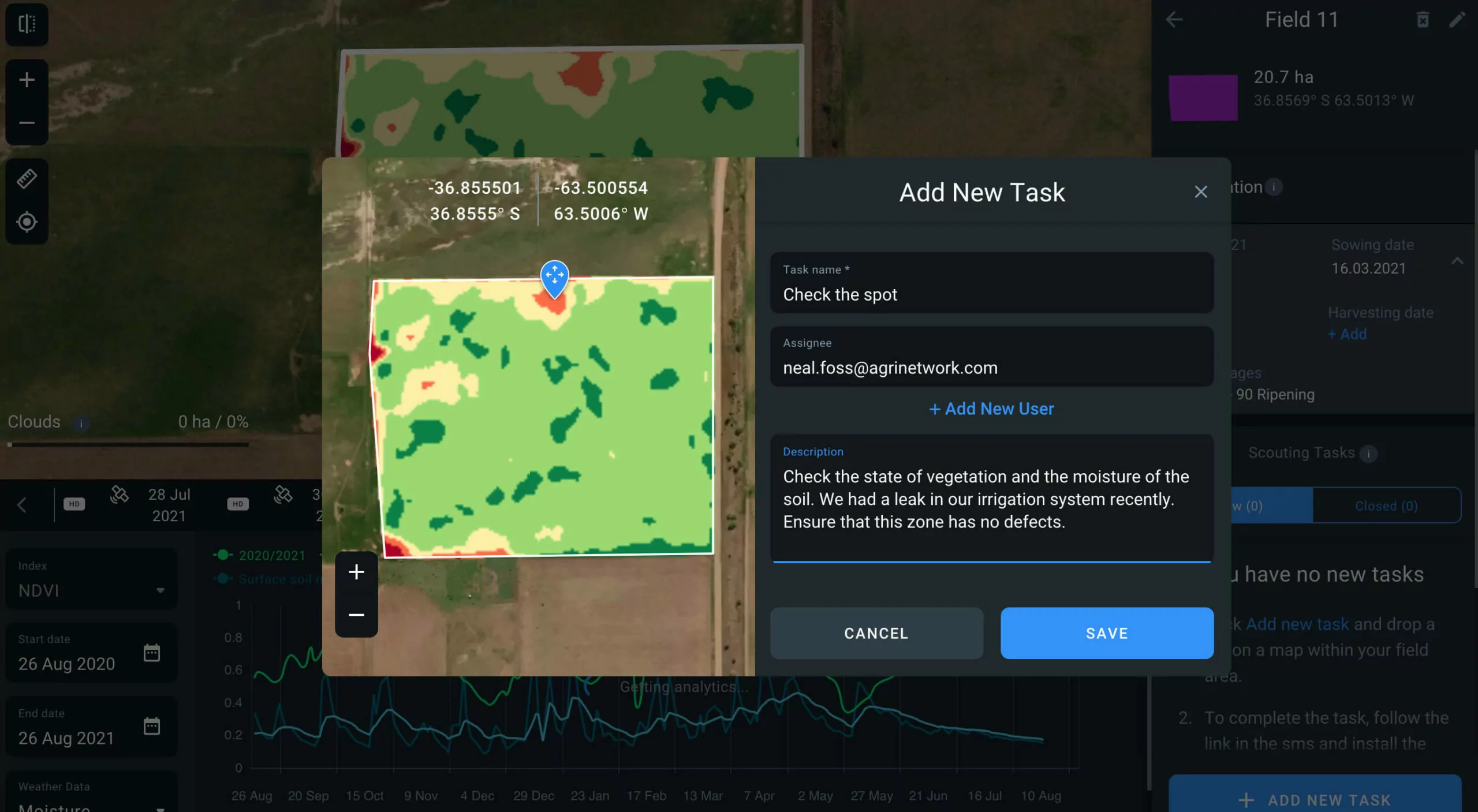
Furthermore, all agricultural operations can be easily logged and tracked on EOSDA Crop Monitoring, including soil solarization, to know what is going on with a field and always be aware of any agricultural practices. This way, the field activity log helps avoid missed or mistakenly repeated treatments.
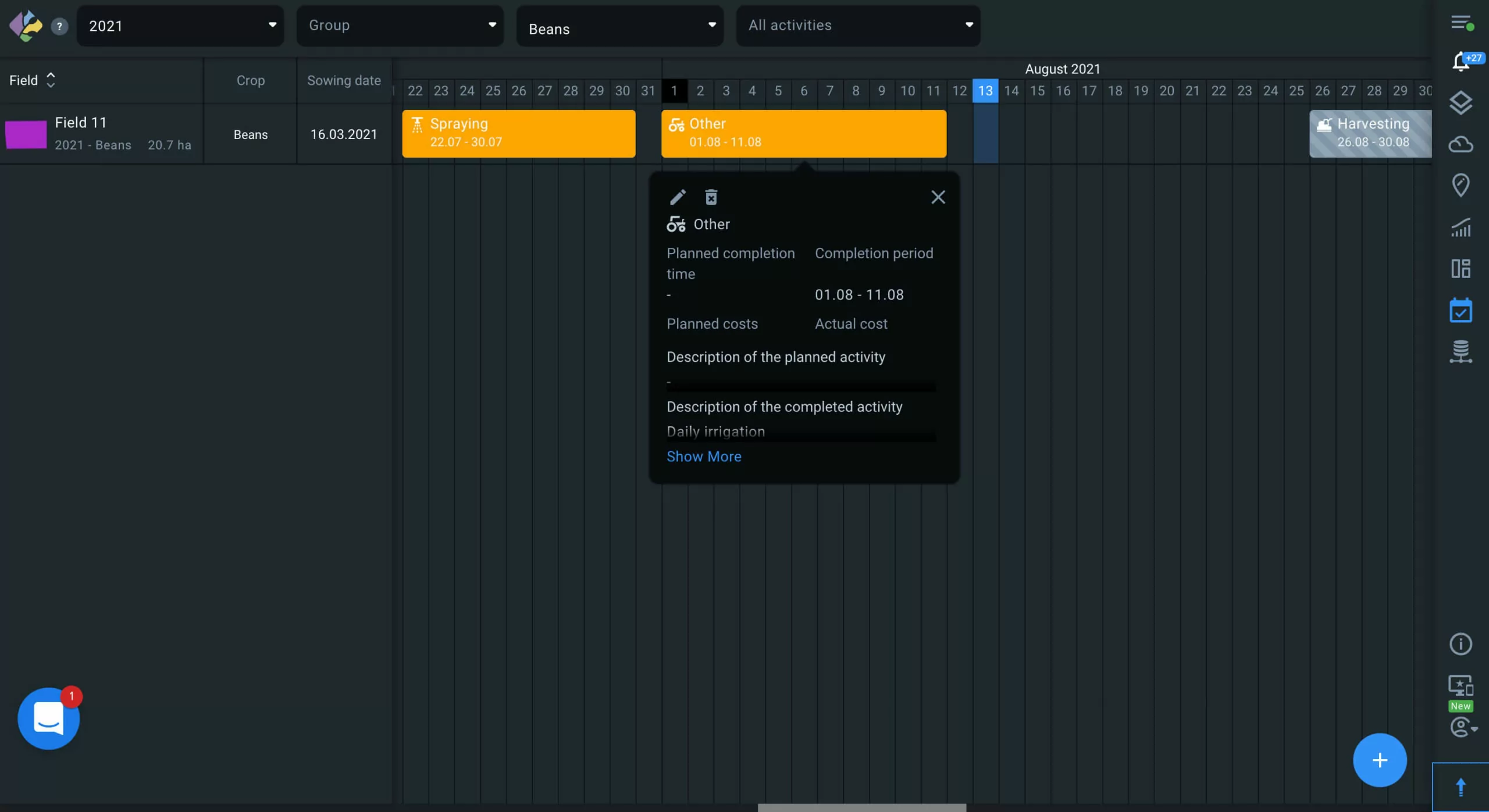
The potential of EOSDA Crop Monitoring is much wider than the features mentioned above. Farmers can use this powerful satellite-driven platform throughout the season to monitor crop development from sprouting up to harvesting.
Disadvantages Of Soil Solarization
Solarization may seem like the perfect environmentally friendly strategy for preventing and treating plant diseases and pests. Still, weighing both the pros and cons of soil solarization before committing to it is crucial.
The lengthy treatment time, reliance on climatic energy, and post-treatment contamination from plastic residues are all drawbacks of solarization. Also, solarization isn’t the best option in places with a cold climate, like the northern regions of the United States, Canada, and Northern Europe. As temperatures have risen over the past several decades, however, we can assume that many regions will soon be able to apply soil solarization and raise its overall efficiency.
About the author:
Vasyl Cherlinka is a Doctor of Biosciences specializing in pedology (soil science), with 30 years of experience in the field. He attended the engineering college in Ukraine and received his degree in agrochemistry, agronomy and soil science in the Chernivtsi National University. Since 2018, Dr. Cherlinka has been advising EOSDA on problems in soil science, agronomy, and agrochemistry.
Recent articles

Analyze 2025 & Plan Your Best Year Yet: LandViewer Christmas Offer
It’s the most wonderful time of the year! The Christmas holidays are here, and so is your chance to analyze 2025 and plan a prosperous 2026 with more affordable Pro plans in LandViewer.
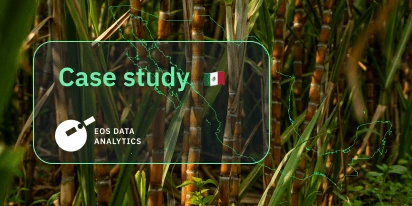
EOSDA Models Climate Change Impact On Sugarcane Yields
EOSDA modeled future temperature, rainfall, and other climate impacts on Veracruz sugarcane. The results help growers plan long-term adaptation strategies, including timing, varieties, and irrigation.

EOSDA LandViewer Black Friday Sale: Exclusive Offers & Giveaway
This Black Friday, LandViewer offers new users the chance to save on monthly plans, get extra months with yearly subscriptions, and participate in a free annual plan giveaway.